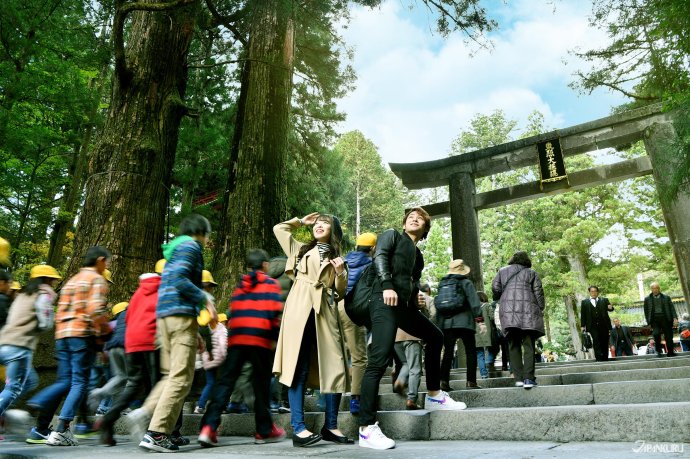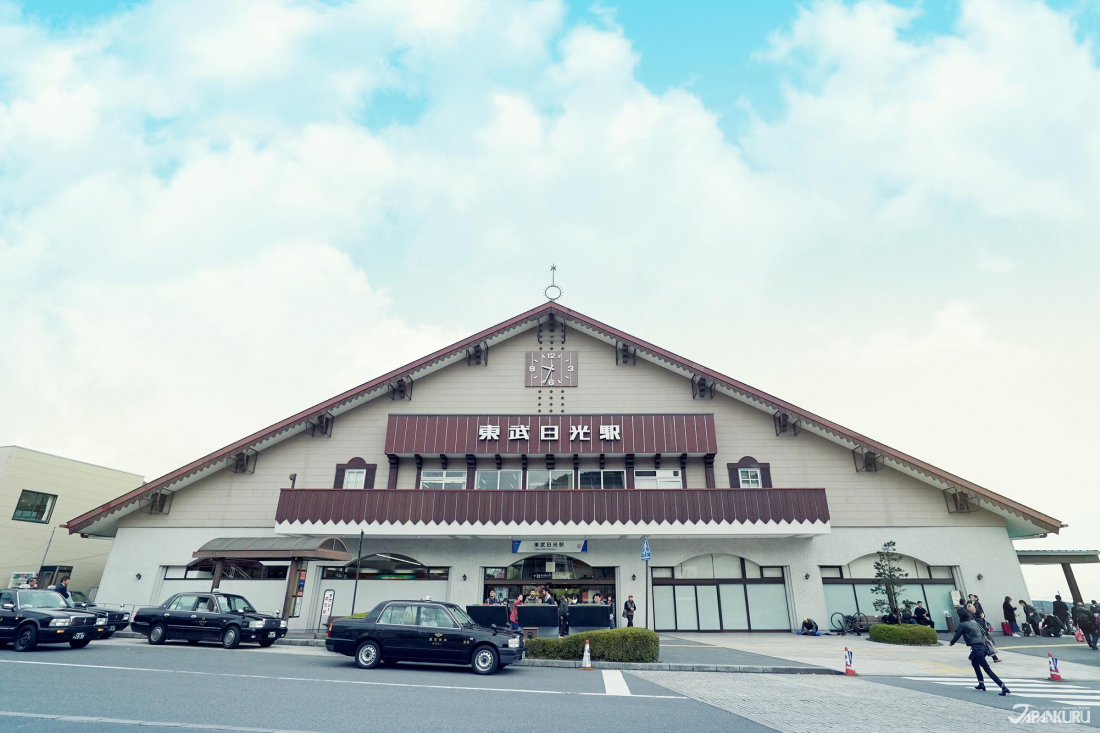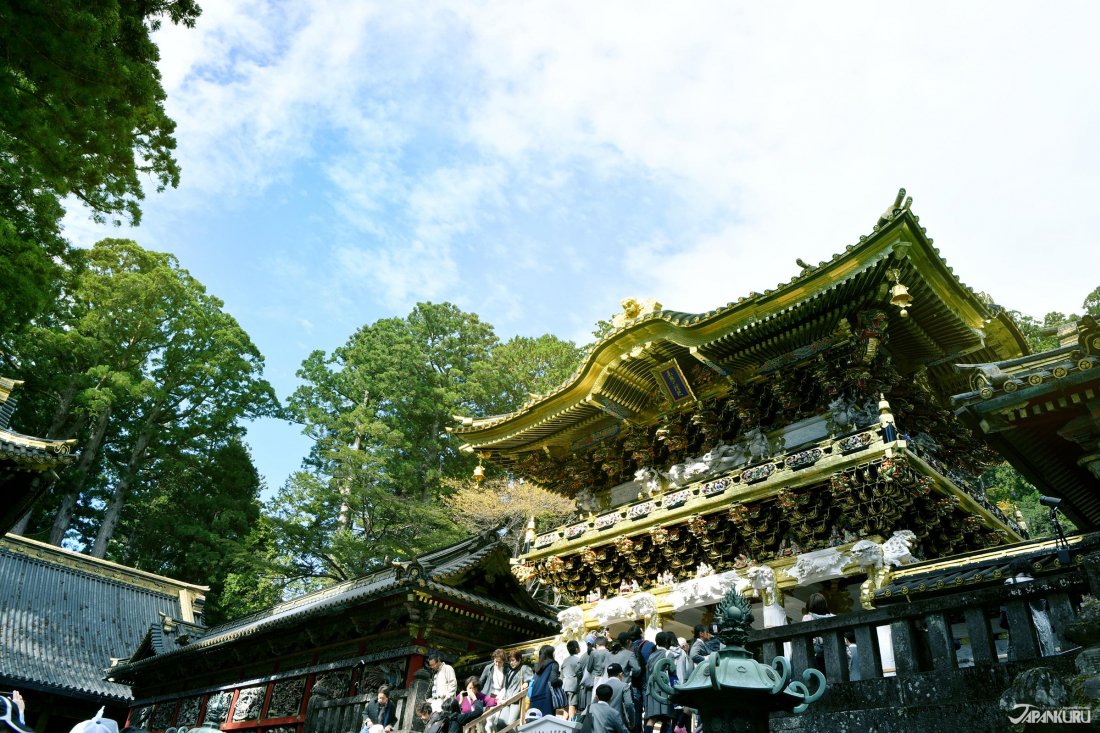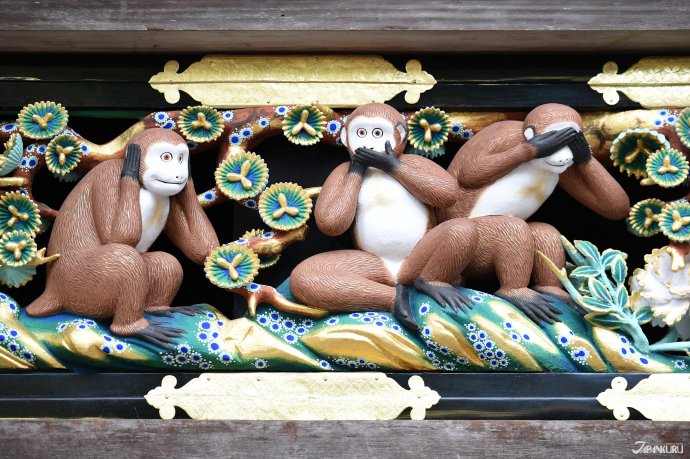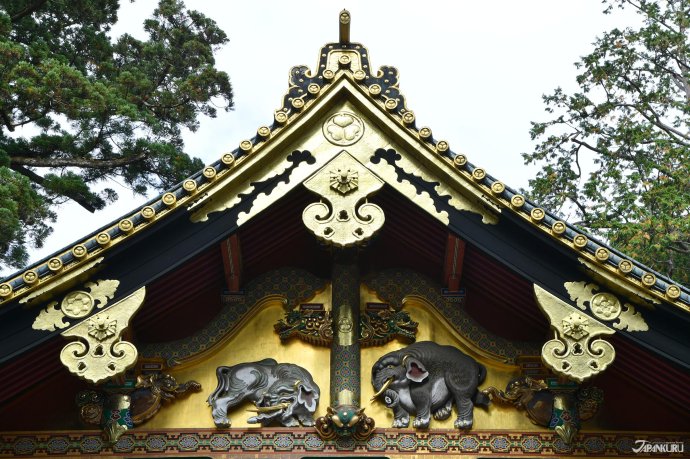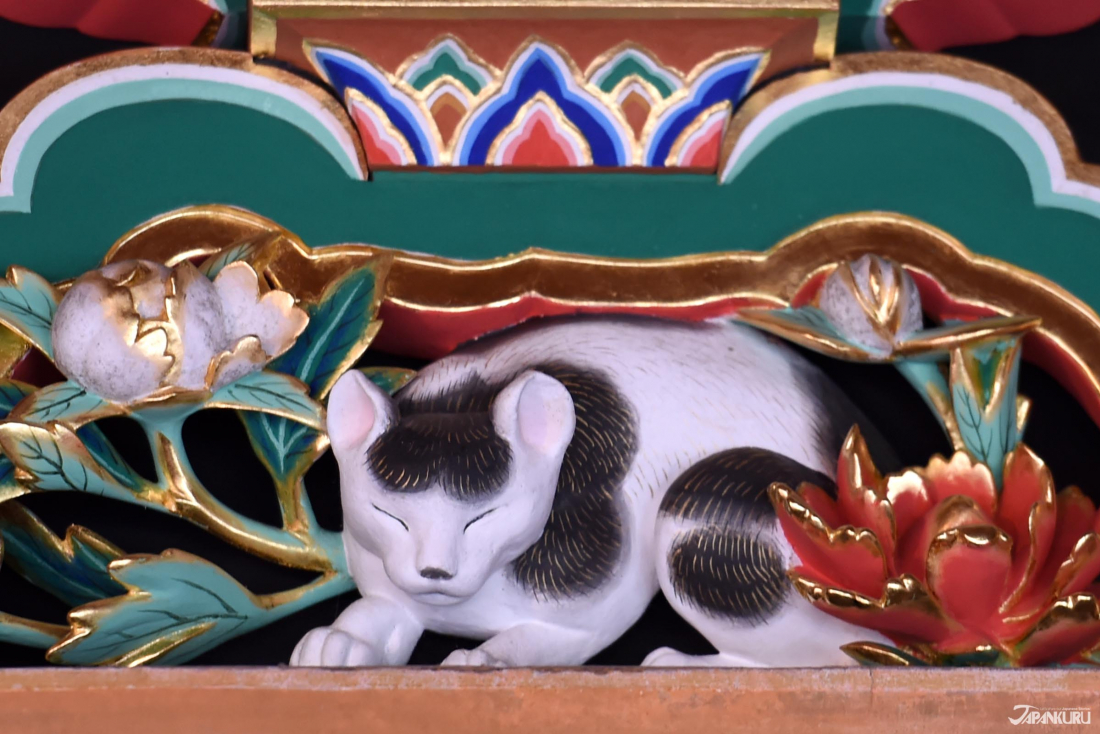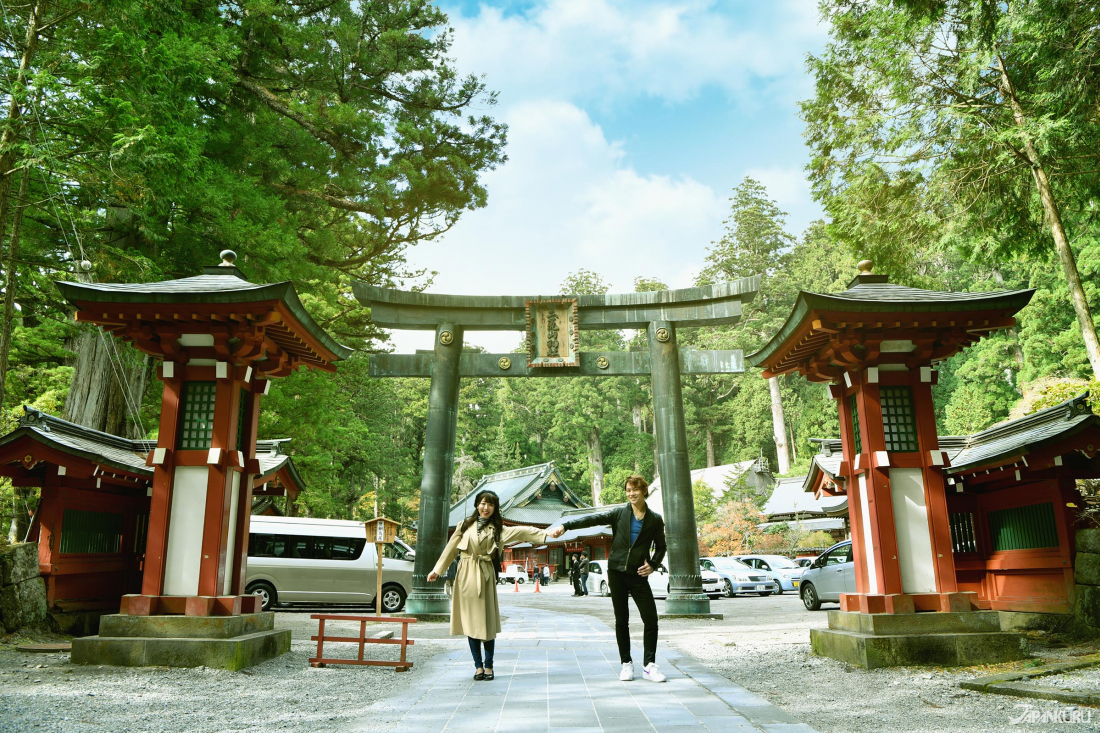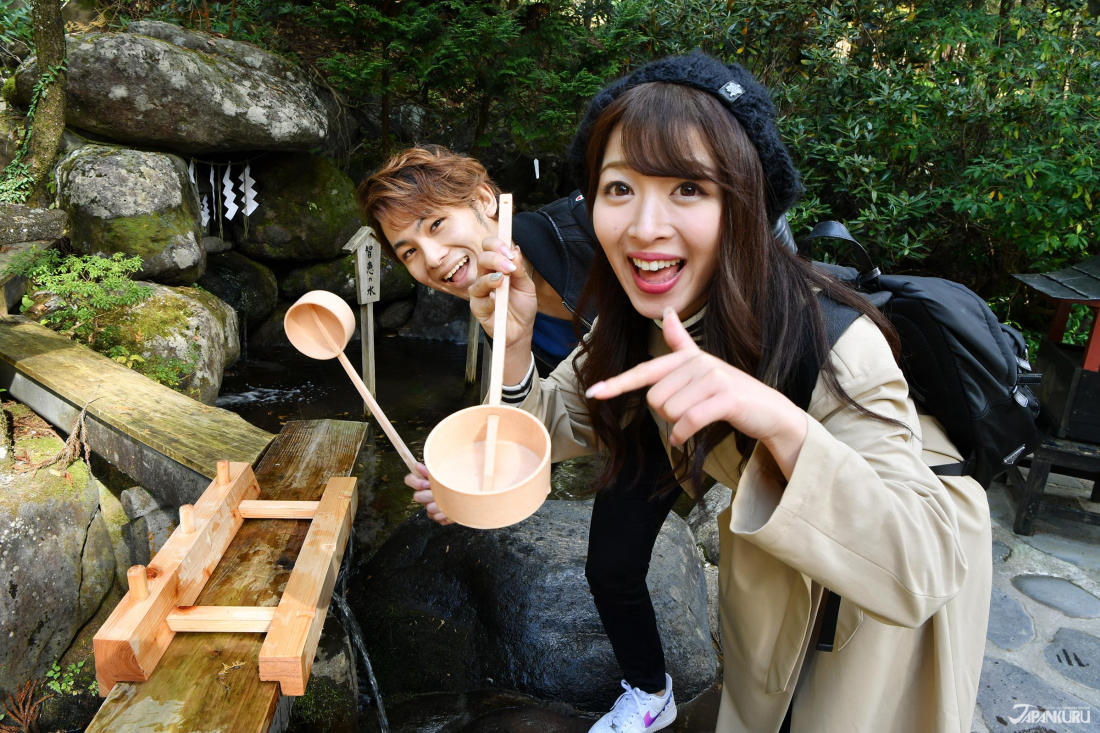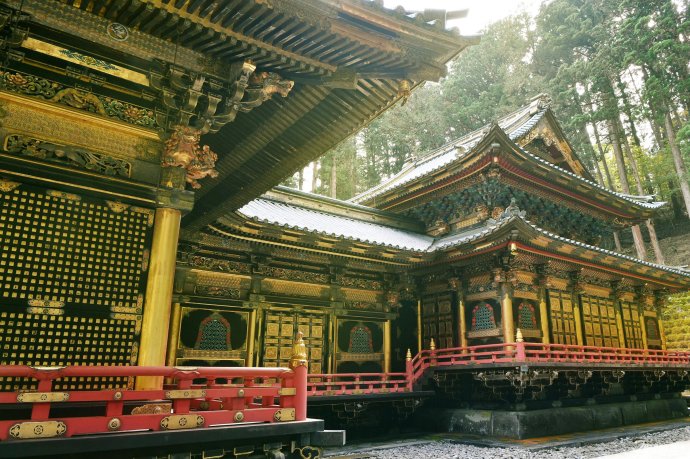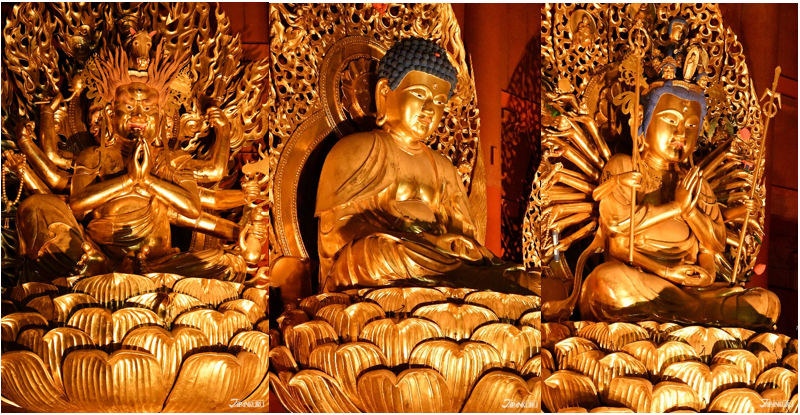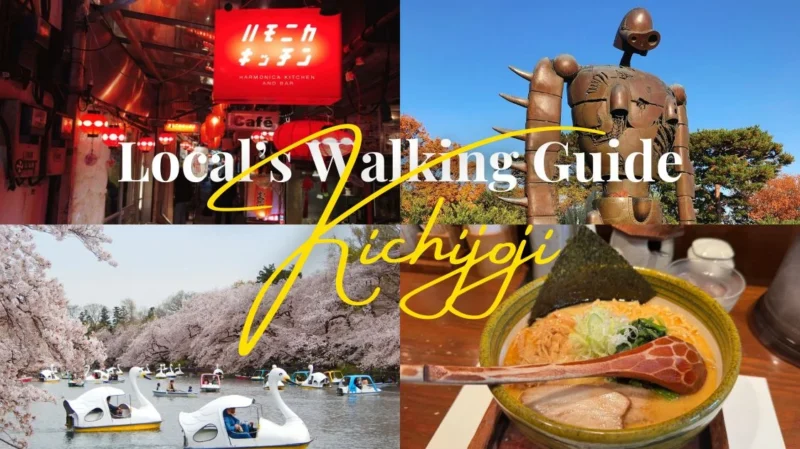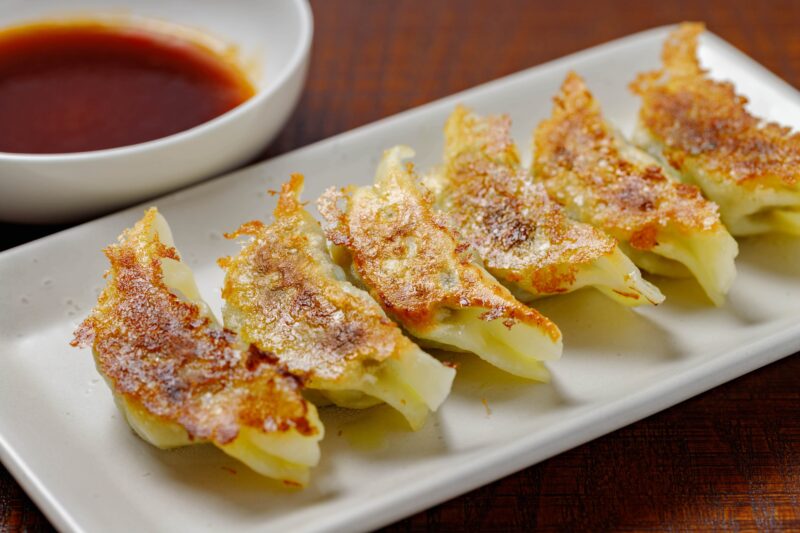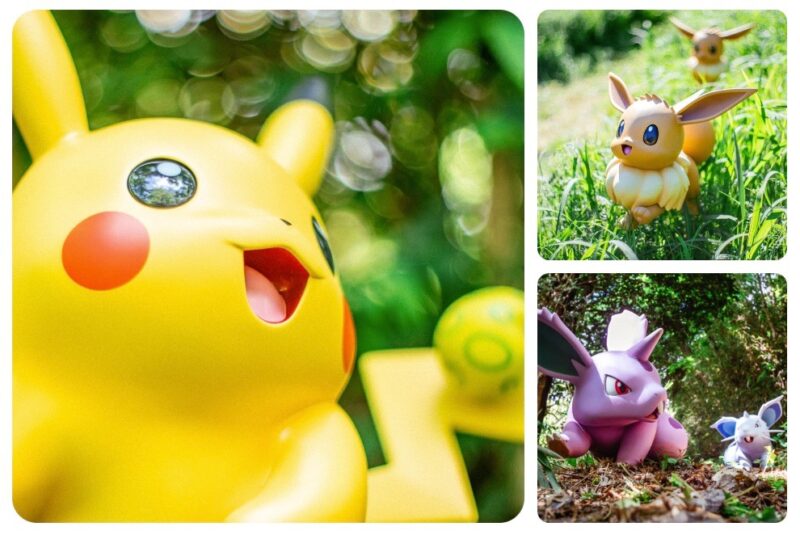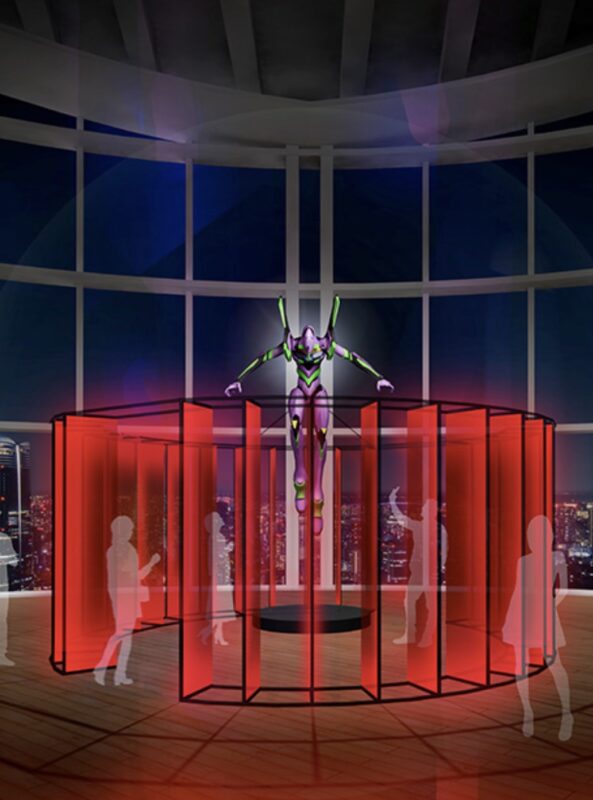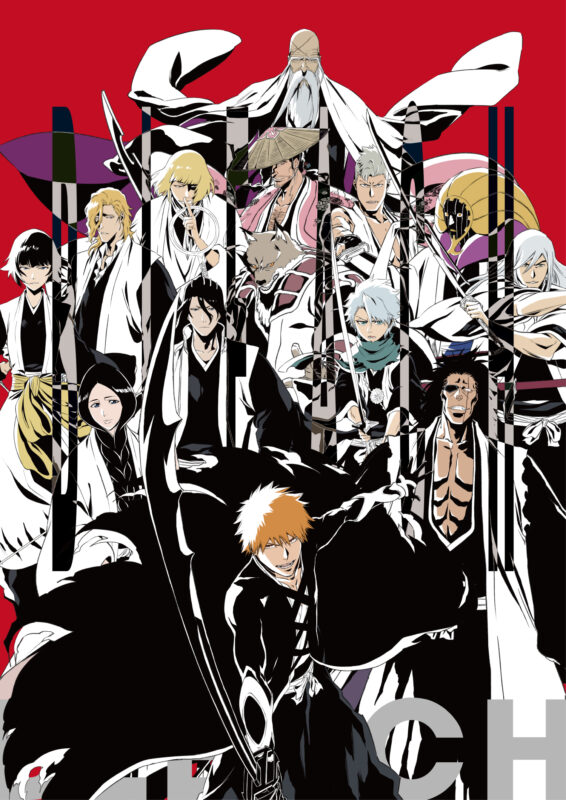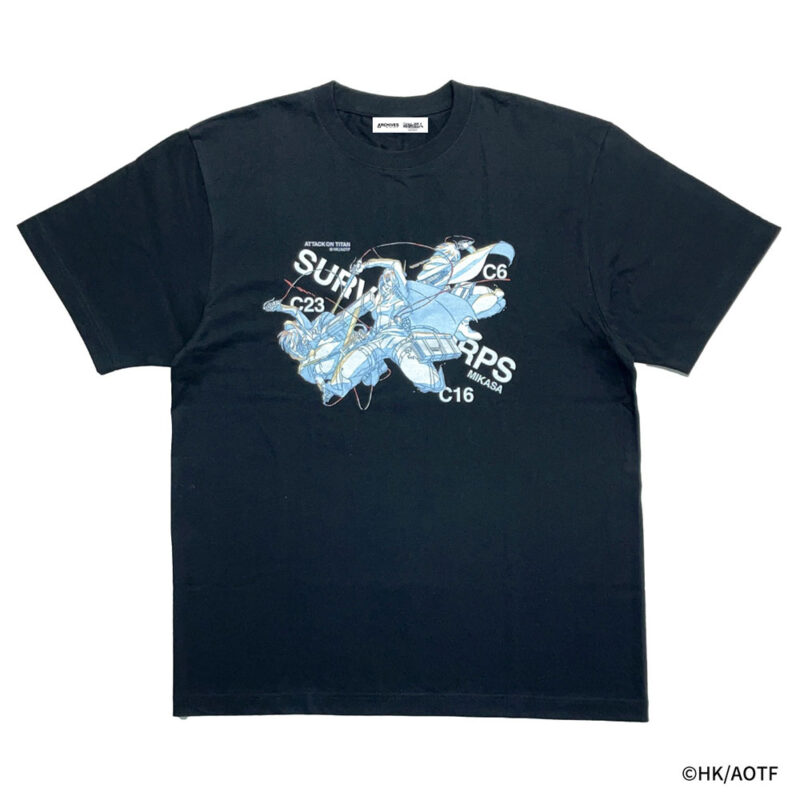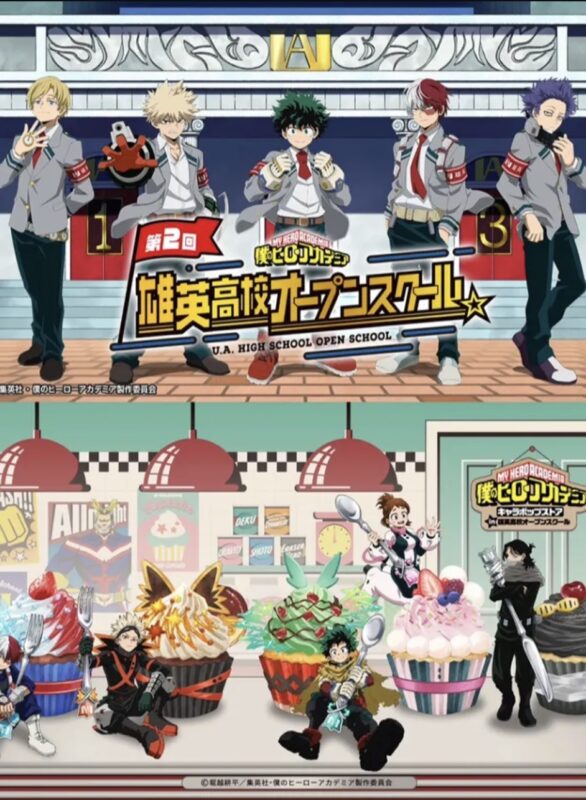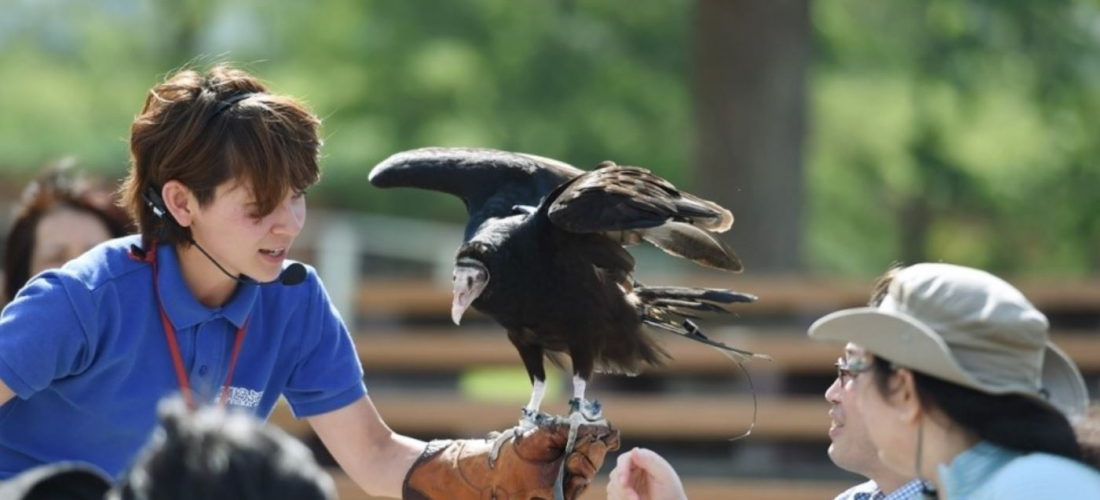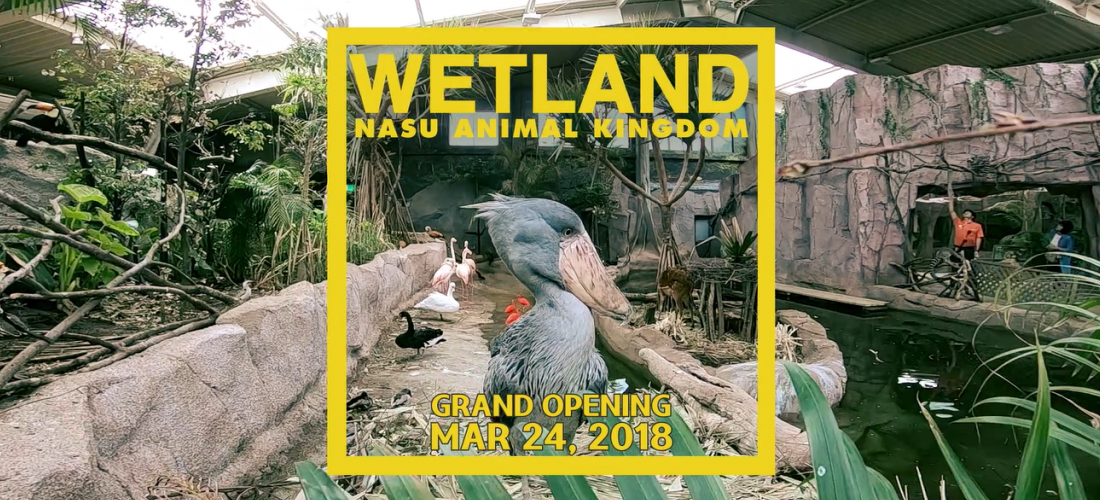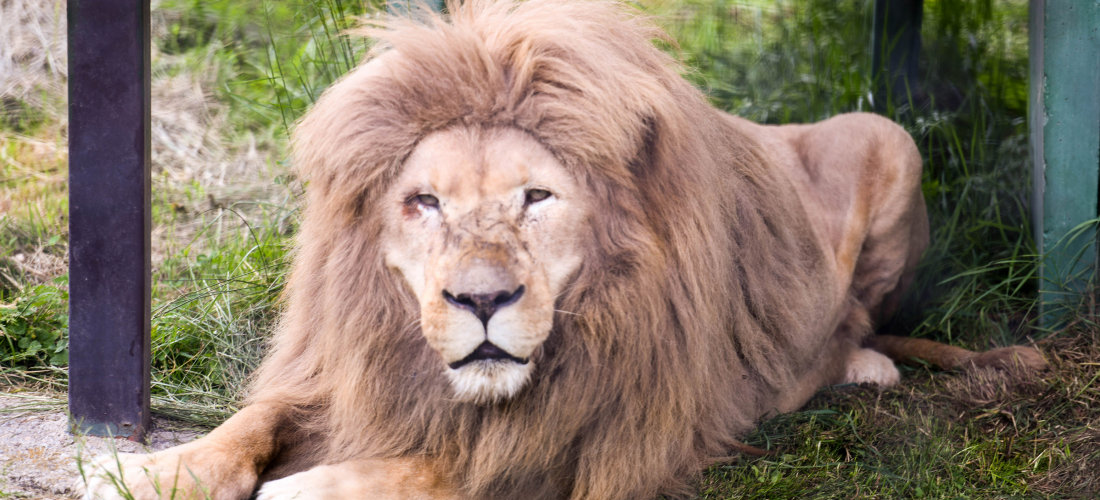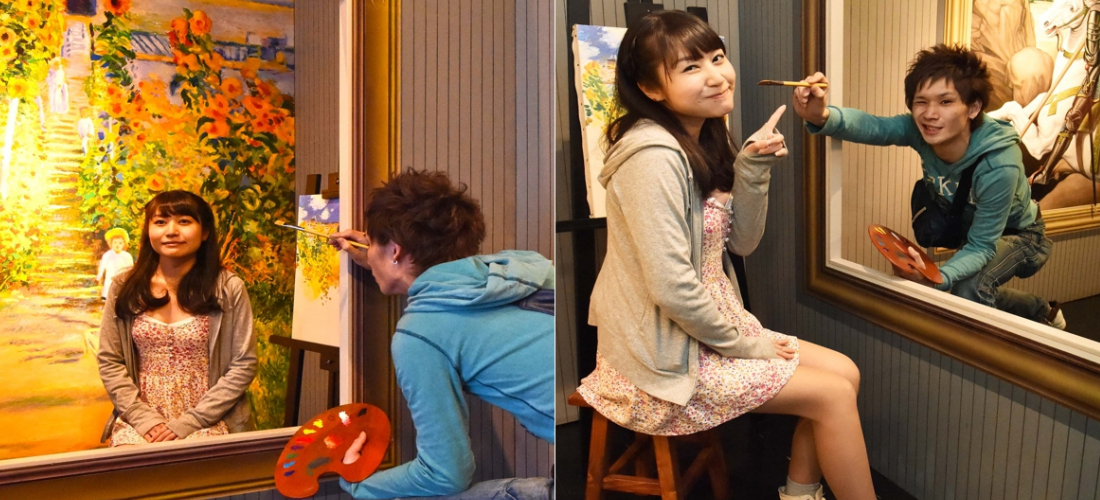UNESCO World Heritage Sites in Nikko, Japan
The World Heritage city Nikko (日光) is two hours from Tokyo. It's a place where you can enjoy nature, hot springs, resorts, and many cultural and historical masterpieces. We drove around Nikko to check out those places!
There are plenty of World Heritage shrines and temples, but we only went to the 4 main ones:
‣Toshogu Shrine (東照宮)
‣Futarasan Shrine (二荒山神社)
‣Taiyun Temple (大猷院廟)
‣Rinnoji Temple (輪王寺)
*We got a special tour, learning things that weren't in our tour books!*
🚃 Getting to Nikko 🚃
You can get to Nikko from different stations/routs, but the easiest and cheapest way is taking Tobu Railways from Asakusa Station. Another plus is at the Tobu Tourist Information Center Asakusa (on the first floor of the Tobu Asakusa Station), you can purchase discount Nikko tickets. There are a variety of passes for international tourists to go with your itinerary.
Tobu Discount Ticket Info (English)
For this specific trip, we got the Nikko City Area Pass.
The tickets are 2,670 yen (about $24), valid for two days and gives you access to a lot of areas in the Nikko and Kinugawa Onsen area.
🚙 Arriving at Nikko 🚙
We got to Tobu Nikko Station in less than two hours and right outside of the station are bus stops and car rental companies.
You could easily take the World Heritage sightseeing bus, but since we were having a two day adventure and going to places besides Nikko's shrines and temples we rented a car from Nissan Rent-a-Car. It made things super convenient.
⓵ TOSHOGU SHRINE (東照宮)
Toshogu Shrine was built in 1617 for Ieyasu Tokugawa, the first shogunate of the Edo period. The shrine consists of 55 buildings and lots of stairways. It's currently under reconstruction, but you can still see a lot and take nice pictures! The Yomeigate is the most famous part of the shrine. It's covered with cravings of wise men, children, lions, and other traditional designs. The lavish engravings and colors of the shrine was later redone by the third shogunate, Iemitsu Tokugawa (Ieyasu's grandson). These are the parts that makes Toshogu Shrine so famous and said to be the most beautiful shrine in Japan.
⏰Hours: 8am~5pm (4pm from Nov. to March)
*Admission ends 30mins before closing
The Sacred Stable (Shinkyusha) was where the sacred horses were kept. There weren't horses when we went unfortunately, but if you looked closely you'd see the monkeys carved around the stable. Where most people know this spot for the three wise monkeys, but we were surprised to hear that there is so much more than that!
You'll notice many of the buildings decorated with mysterious animals…can you guess what they are though?! You may have guessed the right is an elephant, but the left is a giraffe! Why do they look that way? It's because Japan didn't have a lot of these exotic animals, so they had to guess what these animals looked like going off what they read/heard.
The "Sleeping Cat", a national treasure created by Hidari Jingoro. On the other side of this piece are 3 birds! The story is the cat is originally there to protect the grave of Tokugawa. Normally if a bird is around a cat, the cat would eat them. However, the cat is sleeping! So it's a symbol showing that there is so much peace the cat doesn't need to kill the birds and can just rest.
Here are three kilns dedicated to the gods for a sacred matsuri held in the spring (May 18th) and fall (October 17).
A candle holder from the Netherlands to Tokugawa Ieyasu as a sign of good friendship.
⓶ FUTARASAN SHRINE (二荒山神社)
Where Toshogu is the most popular of the two,
Futarasan is the oldest.
Originally dedicated to Nikko's mountain deities,
it's a popular spot for couples and those wishing for love.
There are many parts for rituals for couples to do.
It's believed to bring them happiness or marriage!
⏰Hours: 8am~5pm (4pm from Nov. to March)
"Cleansing" from the sacred spring and enjoy the beautiful greenery around you!!
The Shinkyo Bride (神橋) is a part of the Futarasan Shrine and is ranked as one of Japan's most beautiful bridges! 💗We'd have to agree💗
⓷ TAIYUIN TEMPLE (大猷院廟)
As mentioned before,
Iemitsu reconstructed the Toshogu Shrine,
so you will see a lot of similarities in the lavish design.
This is where people go to pray to Iemitsu.
The hall of worship and inner shrine are connected making an H shape.
There is also another mysterious animal!
See if you can find the tapir!!
⓸ RINNOJI TEMPLE (輪王寺)
The Sanbutsudo Hall of Rinnoji Temple is designated as an important cultural property as the largest wooden building in East Japan. It was built in the Heian era, and currently being refurbished but said to be completed after 2020. Inside are huge golden statues of about 7.5 meters tall, of deities Bato Kannon, Amida, and Senju Kannon.
‣Bato Kannon – traditionally popular among warriors, especially before a battle, Bato Kannon was believed to protect them from illness and death. Now farmers are mainly the ones who come to pray to Bato to protect their farm animals (hence the horse head).
‣Amida – Amida is known as one of the meditation and wisdom Buddhas. You are most likely to see Amida and the 4 other wisdom Buddhas around Japan.
‣Senju Kannon – Known as "Kannon of the 1000 arms", she holds many items in each hand to help save you. Things such as a spear, arrow, and mirror.
Details
NAME:Nikko
MAP
2301 Sannai, Nikko, Tochigi Prefecture
2307 Sannai, Nikko, Tochigi Prefecture
2300 Sannai, Nikko, Tochigi Prefecture
ACCESS:Tobu Nikko Station
COMMENT
FEATURED MEDIA
VIEW MORE 
A New Tokyo Animal Destination: Relax & Learn About the World’s Animals in Japan
#pr #japankuru #anitouch #anitouchtokyodome #capybara #capybaracafe #animalcafe #tokyotrip #japantrip #카피바라 #애니터치 #아이와가볼만한곳 #도쿄여행 #가족여행 #東京旅遊 #東京親子景點 #日本動物互動體驗 #水豚泡澡 #東京巨蛋城 #เที่ยวญี่ปุ่น2025 #ที่เที่ยวครอบครัว #สวนสัตว์ในร่ม #TokyoDomeCity #anitouchtokyodome

Shohei Ohtani Collab Developed Products & Other Japanese Drugstore Recommendations From Kowa
#pr #japankuru
#kowa #syncronkowa #japanshopping #preworkout #postworkout #tokyoshopping #japantrip #일본쇼핑 #일본이온음료 #오타니 #오타니쇼헤이 #코와 #興和 #日本必買 #日本旅遊 #運動補充能量 #運動飲品 #ช้อปปิ้งญี่ปุ่น #เครื่องดื่มออกกำลังกาย #นักกีฬา #ผลิตภัณฑ์ญี่ปุ่น #อาหารเสริมญี่ปุ่น

도쿄 근교 당일치기 여행 추천! 작은 에도라 불리는 ‘가와고에’
세이부 ‘가와고에 패스(디지털)’ 하나면 편리하게 이동 + 가성비까지 완벽하게! 필름카메라 감성 가득한 레트로 거리 길거리 먹방부터 귀여움 끝판왕 핫플&포토 스폿까지 총집합!
Looking for day trips from Tokyo? Try Kawagoe, AKA Little Edo!
Use the SEIBU KAWAGOE PASS (Digital) for easy, affordable transportation!
Check out the historic streets of Kawagoe for some great street food and plenty of picturesque retro photo ops.
#pr #japankuru #도쿄근교여행 #가와고에 #가와고에패스 #세이부패스 #기모노체험 #가와고에여행 #도쿄여행코스 #도쿄근교당일치기 #세이부가와고에패스
#tokyotrip #kawagoe #tokyodaytrip #seibukawagoepass #kimono #japantrip

Hirakata Park, Osaka: Enjoy the Classic Japanese Theme Park Experience!
#pr #japankuru #hirakatapark #amusementpark #japantrip #osakatrip #familytrip #rollercoaster #retrôvibes #枚方公園 #大阪旅遊 #關西私房景點 #日本親子旅行 #日本遊樂園 #木造雲霄飛車 #히라카타파크 #สวนสนุกฮิราคาตะพาร์ค

🍵Love Matcha? Upgrade Your Matcha Experience With Tsujiri!
・160년 전통 일본 말차 브랜드 츠지리에서 말차 덕후들이 픽한 인기템만 골라봤어요
・抹茶控的天堂!甜點、餅乾、飲品一次滿足,連伴手禮都幫你列好清單了
・ส่องมัทฉะสุดฮิต พร้อมพาเที่ยวร้านดังในอุจิ เกียวโต
#pr #japankuru #matcha #matchalover #uji #kyoto #japantrip #ujimatcha #matchalatte #matchasweets #tsujiri #말차 #말차덕후 #츠지리 #교토여행 #말차라떼 #辻利抹茶 #抹茶控 #日本抹茶 #宇治 #宇治抹茶 #日本伴手禮 #抹茶拿鐵 #抹茶甜點 #มัทฉะ #ของฝากญี่ปุ่น #ชาเขียวญี่ปุ่น #ซึจิริ #เกียวโต

・What Is Nenaito? And How Does This Sleep Care Supplement Work?
・你的睡眠保健品——認識「睡眠茶氨酸錠」
・수면 케어 서플리먼트 ‘네나이토’란?
・ผลิตภัณฑ์เสริมอาหารดูแลการนอน “Nenaito(ネナイト)” คืออะไร?
#pr #japankuru #sleepcare #japanshopping #nenaito #sleepsupplement #asahi #睡眠茶氨酸錠 #睡眠保健 #朝日 #l茶胺酸 #日本藥妝 #日本必買 #일본쇼핑 #수면 #건강하자 #네나이토 #일본영양제 #อาหารเสริมญี่ปุ่น #ช้อปปิ้งญี่ปุ่น #ร้านขายยาญี่ปุ่น #ดูแลตัวเองก่อนนอน #อาซาฮิ

Japanese Drugstore Must-Buys! Essential Items from Hisamitsu® Pharmaceutical
#PR #japankuru #hisamitsu #salonpas #feitas #hisamitsupharmaceutical #japanshopping #tokyoshopping #traveltips #japanhaul #japantrip #japantravel

Whether you grew up with Dragon Ball or you just fell in love with Dragon Ball DAIMA, you'll like the newest JINS collab. Shop this limited-edition Dragon Ball accessory collection to find some of the best Dragon Ball merchandise in Japan!
>> Find out more at Japankuru.com! (link in bio)
#japankuru #dragonball #dragonballdaima #animecollab #japanshopping #jins #japaneseglasses #japantravel #animemerch #pr

This month, Japankuru teamed up with @official_korekoko to invite three influencers (originally from Thailand, China, and Taiwan) on a trip to Yokohama. Check out the article (in Chinese) on Japankuru.com for all of their travel tips and photography hints - and look forward to more cool collaborations coming soon!
【橫濱夜散策 x 教你怎麼拍出網美照 📸✨】
每次來日本玩,是不是都會先找旅日網紅的推薦清單?
這次,我們邀請擁有日本豐富旅遊經驗的🇹🇭泰國、🇨🇳中國、🇹🇼台灣網紅,帶你走進夜晚的橫濱!從玩樂路線到拍照技巧,教你怎麼拍出最美的夜景照。那些熟悉的景點,換個視角說不定會有新發現~快跟他們一起出發吧!
#japankuru #橫濱紅磚倉庫 #汽車道 #中華街 #yokohama #japankuru #橫濱紅磚倉庫 #汽車道 #中華街 #yokohama #yokohamaredbrickwarehouse #yokohamachinatown

If you’re a fan of Vivienne Westwood's Japanese designs, and you’re looking forward to shopping in Harajuku this summer, we’ve got important news for you. Vivienne Westwood RED LABEL Laforet Harajuku is now closed for renovations - but the grand reopening is scheduled for July!
>> Find out more at Japankuru.com! (link in bio)
#japankuru #viviennewestwood #harajuku #omotesando #viviennewestwoodredlabel #viviennewestwoodjapan #비비안웨스트우드 #오모테산도 #하라주쿠 #日本購物 #薇薇安魏斯伍德 #日本時尚 #原宿 #表參道 #japantrip #japanshopping #pr

Ready to see TeamLab in Kyoto!? At TeamLab Biovortex Kyoto, the collective is taking their acclaimed immersive art and bringing it to Japan's ancient capital. We can't wait to see it for ourselves this autumn!
>> Find out more at Japankuru.com! (link in bio)
#japankuru #teamlab #teamlabbiovortex #kyoto #kyototrip #japantravel #artnews
Photos courtesy of teamLab, Exhibition view of teamLab Biovortex Kyoto, 2025, Kyoto ® teamLab, courtesy Pace Gallery

Japanese Makeup Shopping • A Trip to Kamakura & Enoshima With Canmake’s Cool-Toned Summer Makeup
#pr #canmake #enoshima #enoden #에노시마 #캔메이크 #japanesemakeup #japanesecosmetics

⚔️The Robot Restaurant is gone, but the Samurai Restaurant is here to take its place. Check it out, and don't forget your coupon!
🍣신주쿠의 명소 로봇 레스토랑이 사무라이 레스토랑으로 부활! 절찬 쿠폰 발급중
💃18歲以上才能入場的歌舞秀,和你想的不一樣!拿好優惠券去看看~
#tokyo #shinjuku #samurairestaurant #robotrestaurant #tokyotrip #도쿄여행 #신주쿠 #사무라이레스토랑 #이색체험 #할인이벤트 #歌舞伎町 #東京景點 #武士餐廳 #日本表演 #日本文化體驗 #japankuru #japantrip #japantravel #japanlovers #japan_of_insta

Japanese appliance & electronics shopping with our KOJIMA x BicCamera coupon!
用JAPANKURU的KOJIMA x BicCamera優惠券買這些正好❤️
코지마 x 빅 카메라 쿠폰으로 일본 가전 제품 쇼핑하기
#pr #japankuru #japanshopping #kojima #biccamera #japaneseskincare #yaman #dji #osmopocket3 #skincaredevice #日本購物 #美容儀 #相機 #雅萌 #日本家電 #일본여행 #면세 #여행꿀팁 #일본쇼핑리스트 #쿠폰 #일본쇼핑 #일본브랜드 #할인 #코지마 #빅카메라 #japankurucoupon


